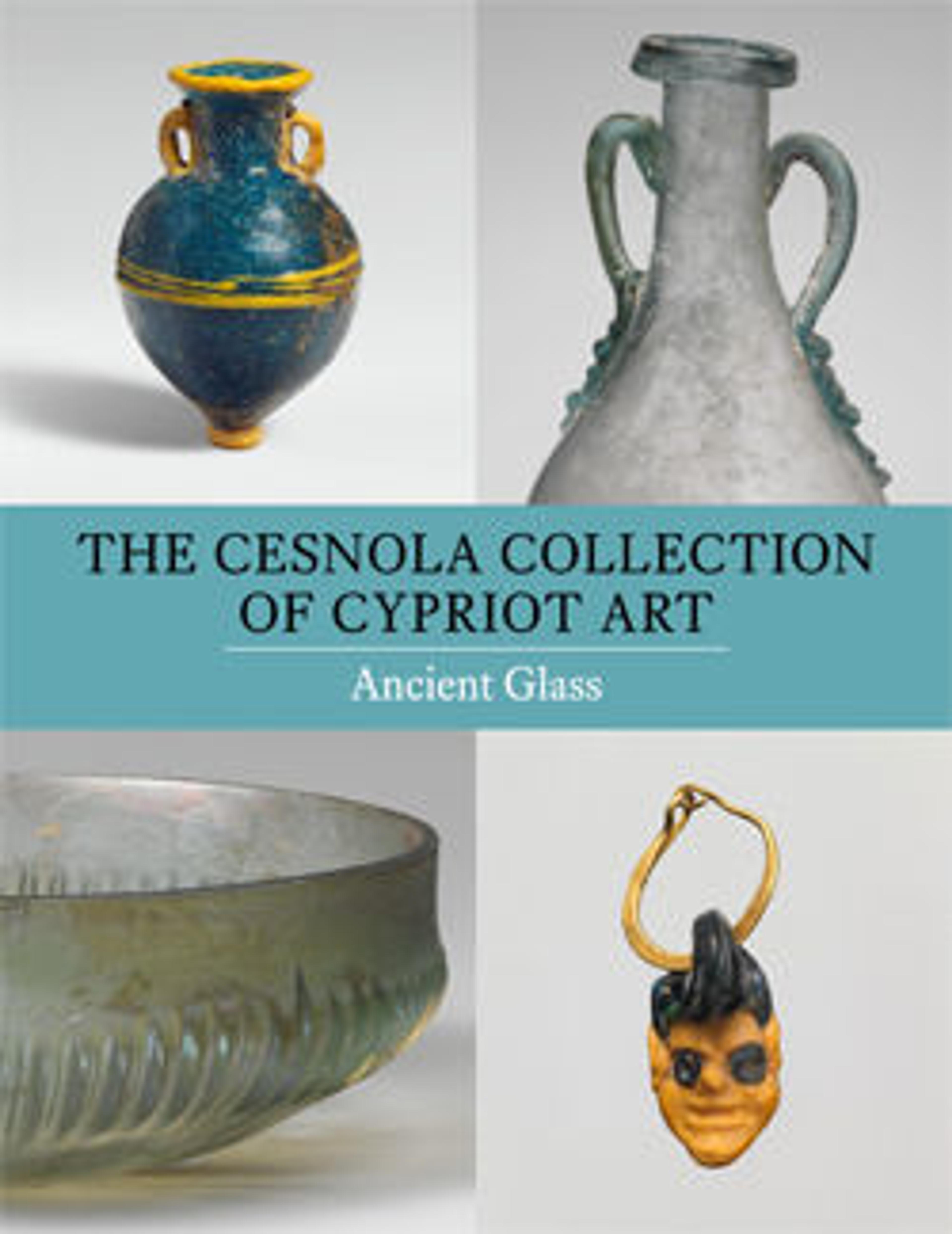Glass krateriskos (unguent jar)
Translucent blue, with opaque white trail(s).
Thickened and rounded rim with everted horizontal lip; tall cylindrical neck, tapering slightly downward; sloping shoulder; bulbous body; pedestal foot, conical, then tooled out into a flat, circular pad; uneven bottom with central kick; on opposite sides of body, two loop handles, applied over trail decoration.
Marvered trail(s) on neck and body, tooled into a festoon pattern.
Broken and repaired, with part of rim and neck missing, a large hole in one side of body, and most of handles lost; thick creamy enamel-like weathering covering all of surfaces, with some soil encrustation on interior.
Among Bronze Age imports into Cyprus from Egypt were glass containers that held perfumes, scented oils, or cosmetics used for funeral purposes. Afterward, the jars were left in the burials. Such jars have been found on Cyprus at Kalavassos in tombs of the fourteenth century B.C. An additional example with a pristine unweathered surface can been seen nearby.
Thickened and rounded rim with everted horizontal lip; tall cylindrical neck, tapering slightly downward; sloping shoulder; bulbous body; pedestal foot, conical, then tooled out into a flat, circular pad; uneven bottom with central kick; on opposite sides of body, two loop handles, applied over trail decoration.
Marvered trail(s) on neck and body, tooled into a festoon pattern.
Broken and repaired, with part of rim and neck missing, a large hole in one side of body, and most of handles lost; thick creamy enamel-like weathering covering all of surfaces, with some soil encrustation on interior.
Among Bronze Age imports into Cyprus from Egypt were glass containers that held perfumes, scented oils, or cosmetics used for funeral purposes. Afterward, the jars were left in the burials. Such jars have been found on Cyprus at Kalavassos in tombs of the fourteenth century B.C. An additional example with a pristine unweathered surface can been seen nearby.
Artwork Details
- Title:Glass krateriskos (unguent jar)
- Period:Late Bronze Age
- Date:ca. 1400–1350 BCE
- Culture:Egyptian or Cypriot
- Medium:Glass; core-formed
- Dimensions:3 11/16 × 2 3/16 in. (9.3 × 5.5 cm)
Diam. of rim: 1 13/16 in. (4.6 cm)
Diam. of foot: 1 7/16 in. (3.6 cm) - Classification:Glass
- Credit Line:The Cesnola Collection, Purchased by subscription, 1874–76
- Object Number:74.51.352
- Curatorial Department: Greek and Roman Art
More Artwork
Research Resources
The Met provides unparalleled resources for research and welcomes an international community of students and scholars. The Met's Open Access API is where creators and researchers can connect to the The Met collection. Open Access data and public domain images are available for unrestricted commercial and noncommercial use without permission or fee.
To request images under copyright and other restrictions, please use this Image Request form.
Feedback
We continue to research and examine historical and cultural context for objects in The Met collection. If you have comments or questions about this object record, please contact us using the form below. The Museum looks forward to receiving your comments.
